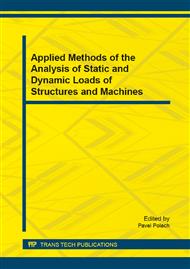p.3
p.9
p.13
p.20
p.24
p.28
p.32
p.45
p.49
Uncertainties of the Evaluation of the Hole Drilling Residual Stress Measurement According to the ASTM E837 Standard
Abstract:
The paper deals in hole drilling residual stress measurement method. The basic principles of measurement and evaluation by the uniform stress and Integral methods are described. The uncertainties of the residual stress evaluation procedure based on the ASTM E837 standard are analyzed. Examples of residual stress evaluation and comparison of different ASTM E837 standard editions are presented.
Info:
Periodical:
Pages:
24-27
Citation:
Online since:
February 2015
Authors:
Keywords:
Price:
Сopyright:
© 2015 Trans Tech Publications Ltd. All Rights Reserved
Share:
Citation:


